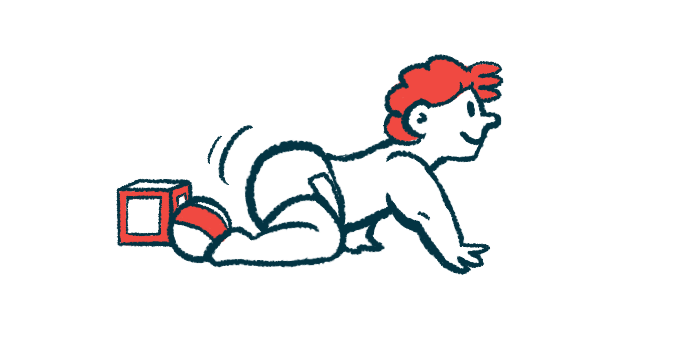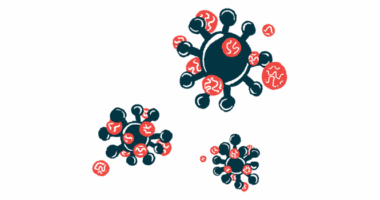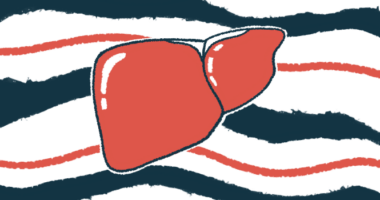Noninvasive stool test may speed biliary atresia diagnosis: Study
Test looks for fluorescent dye in soiled diapers

A noninvasive test that detects a fluorescent dye in stools could help doctors make a biliary atresia diagnosis faster than current methods, distinguishing the condition from other cholestatic diseases in infants without invasive surgery or long waits for test results, a pilot study in the U.S. found.
Biliary atresia, a rare liver disease affecting infants, is characterized by the blockage or absence of certain bile ducts, leading to cholestasis and bile buildup in the liver. This can cause liver damage and leakage of bile acids into the bloodstream, resulting in symptoms such as pale stools, dark urine, and jaundice, or yellowing of the skin and whites of the eyes.
Over time, biliary atresia can progress into liver failure. It’s also “the most common indication for pediatric liver transplantation worldwide,” the researchers wrote. Early diagnosis helps doctors start treatment earlier, which may lead to better long-term outcomes.
Cholestasis is a condition marked by slow or stalled flow of bile, a digestive fluid, from the liver to the intestines. Currently, biliary atresia diagnosis is made with the help of fluorescent dye, but the process typically involves open surgery. Other tests are generally conducted first, and diagnosis “typically includes a multitude of studies,” researchers said.
While the study’s preliminary findings are promising, larger studies are needed to confirm the test’s diagnostic potential, the researchers noted. Their study, “A Pilot Study for Biliary Atresia Diagnosis: Fluorescent Imaging of Indocyanine Green in Stool,” was published in the Journal of Pediatric Surgery.
Diagnosis can be a long, invasive process
Distinguishing biliary atresia from other causes of cholestasis in infants can be a long process, with the need to conduct blood and genetic tests, as well as imaging tests that can involve more invasive procedures such as surgery. One of these invasive imaging tests, cholangiography, is the gold standard for diagnosis.
In this procedure, a fluorescent dye called indocyanine green is injected into the bloodstream. It is rapidly removed from circulation by the liver and transported via the network of bile ducts into the intestines, after which it is eventually excreted in stools. If biliary atresia causes blockage, the dye will be retained and not detected across the bile duct network. If a cholangiogram confirms a biliary atresia diagnosis, surgery is generally performed.
“A fast, safe, sensitive, and noninvasive diagnostic tool to identify biliary obstruction in infants is greatly needed,” wrote the researchers, from UT Southwestern Medical Center in Texas.
They reasoned that they could assess the status of the bile duct network in jaundiced infants by looking for indocyanine green in stools. The presence of the dye would indicate an unobstructed biliary network, ruling out a biliary atresia diagnosis, while its absence would indicate an obstruction.
In the single-center pilot study, the team analyzed soiled diapers from two groups of infants after injection of the indocyanine green directly into the bloodstream.
One group comprised 18 infants aged 1 or younger with jaundice, high levels of a cholestasis marker called bilirubin, pale stools, and suspected biliary atresia.
Seven of them were later diagnosed with biliary atresia. Diagnosed conditions in the remaining 11 patients included breast milk jaundice, progressive familial intrahepatic cholestasis, Alagille syndrome, and cystic fibrosis.
The control group consisted of five age-matched infants with pyloric stenosis, a condition marked by the narrowing of the muscle between the stomach and the intestines.
Indocyanine green was administered before diagnostic cholangiogram, involving surgery or not, in the jaundiced group and before corrective surgery for pyloric stenosis in the control group. The researchers confirmed the presence of the dye in the bile duct network during surgery.
Soiled diapers were collected up to 96 hours after dye injection for analyses.
A ‘very promising option’
Results showed positive stool fluorescence in the soiled diapers of all controls within 24 hours of indocyanine green administration. The mean detection time of fluorescence was nearly 14.5 hours after injection.
Fluorescence was also detected in the diapers of all jaundiced infants without biliary atresia, within a mean of nearly 13.5 hours after indocyanine green injection. But fluorescence was not detected in the stools of six of the seven jaundiced infants with biliary atresia. This difference between jaundiced infants with and without biliary atresia was statistically significant.
Statistical models showed that the test was able to discriminate between patients with an unobstructed biliary network and those with biliary obstruction — indicative of biliary atresia — with a sensitivity of 100%, a specificity 85.71%, and an accuracy of 97.14%.
A test’s sensitivity is its ability to correctly identify those with a given condition, while specificity refers to correctly identifying those without it.
Overall, the findings show that indocyanine green detection in stools “is a very promising option for non-invasive assessment of [an unobstructed biliary network] in cholestatic infants,” the researchers wrote, though they noted that their study had limitations, including its small size.






